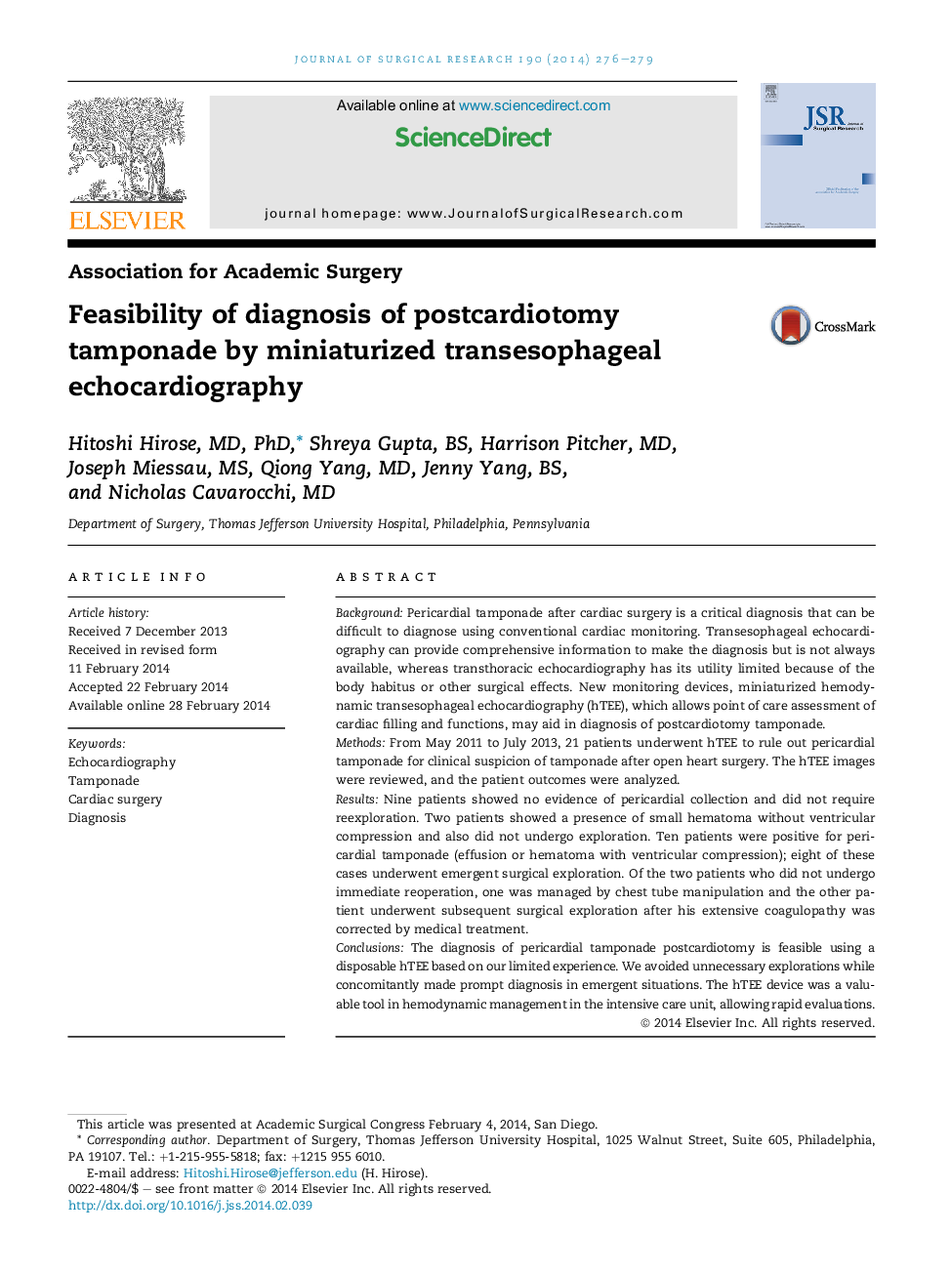| Article ID | Journal | Published Year | Pages | File Type |
|---|---|---|---|---|
| 4300194 | Journal of Surgical Research | 2014 | 4 Pages |
BackgroundPericardial tamponade after cardiac surgery is a critical diagnosis that can be difficult to diagnose using conventional cardiac monitoring. Transesophageal echocardiography can provide comprehensive information to make the diagnosis but is not always available, whereas transthoracic echocardiography has its utility limited because of the body habitus or other surgical effects. New monitoring devices, miniaturized hemodynamic transesophageal echocardiography (hTEE), which allows point of care assessment of cardiac filling and functions, may aid in diagnosis of postcardiotomy tamponade.MethodsFrom May 2011 to July 2013, 21 patients underwent hTEE to rule out pericardial tamponade for clinical suspicion of tamponade after open heart surgery. The hTEE images were reviewed, and the patient outcomes were analyzed.ResultsNine patients showed no evidence of pericardial collection and did not require reexploration. Two patients showed a presence of small hematoma without ventricular compression and also did not undergo exploration. Ten patients were positive for pericardial tamponade (effusion or hematoma with ventricular compression); eight of these cases underwent emergent surgical exploration. Of the two patients who did not undergo immediate reoperation, one was managed by chest tube manipulation and the other patient underwent subsequent surgical exploration after his extensive coagulopathy was corrected by medical treatment.ConclusionsThe diagnosis of pericardial tamponade postcardiotomy is feasible using a disposable hTEE based on our limited experience. We avoided unnecessary explorations while concomitantly made prompt diagnosis in emergent situations. The hTEE device was a valuable tool in hemodynamic management in the intensive care unit, allowing rapid evaluations.
